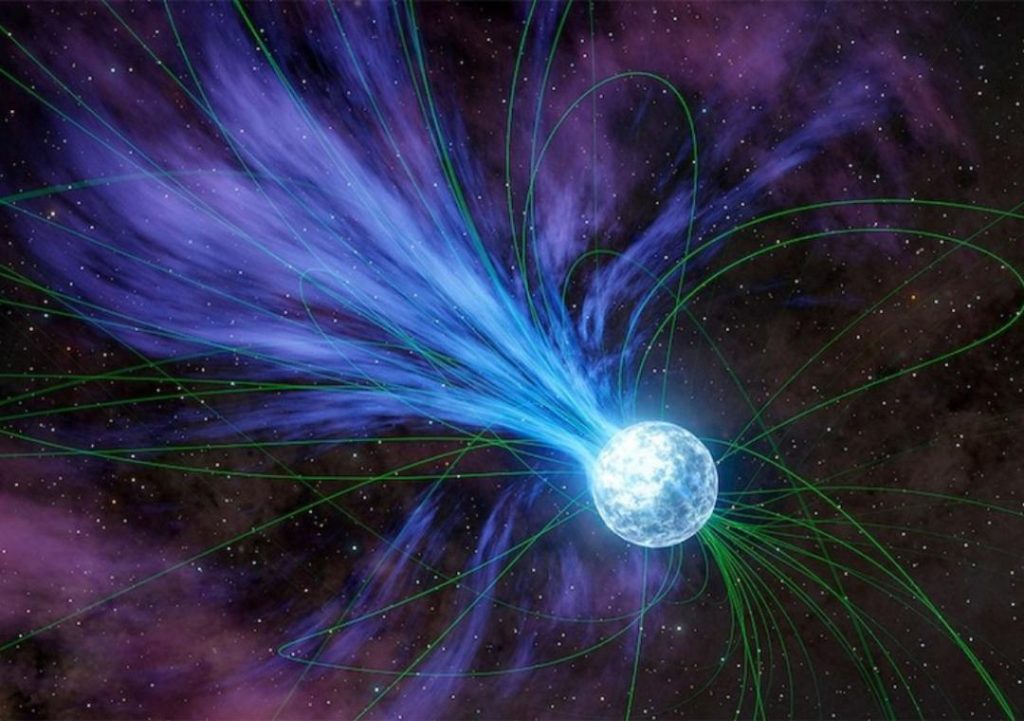
Gold & Platinum Created through Neutron Stars’ Explosions: Study
For centuries, humanity has been fascinated by the origins of precious metals like gold and platinum. While we’ve long known that these metals are abundant on Earth, the process by which they were formed has remained a mystery. However, a recent study led by Columbia University student Anirudh Patel has shed new light on the subject, revealing that these valuable elements were created through the explosions of magnetars, or highly magnetized neutron stars.
According to the study, which was published in the journal Nature, magnetars are responsible for the creation of elements like gold and platinum through a process known as rapid neutron capture, or r-process nucleosynthesis. This process occurs when a magnetar explodes, releasing flares that contain these elements.
The explosions of magnetars are a relatively rare occurrence in the Milky Way galaxy, happening approximately once per decade. However, across the observable universe, these events occur annually. This means that the creation of gold and platinum is a frequent occurrence in the cosmos.
So, how exactly do magnetars create these precious metals? The process begins when a magnetar undergoes a catastrophic event, such as a supernova explosion. During this event, the magnetar’s incredibly strong magnetic field is released, causing it to spin rapidly and heat up.
As the magnetar’s surface temperature increases, it begins to emit intense flares of radiation, including gamma rays and X-rays. These flares are rich in neutrons, which are essential for the creation of heavy elements like gold and platinum.
When these neutrons collide with atomic nuclei, they cause them to absorb extra neutrons and become heavier. This process, known as rapid neutron capture, continues until the nuclei become too heavy to absorb any more neutrons, at which point they become stable and form the elements we know today.
In the case of gold, this process involves the absorption of 79 neutrons by an iron nucleus. This results in the formation of an atomic nucleus that is 197 protons and 79 neutrons large, which is the definition of gold.
Similarly, the creation of platinum involves the absorption of 106 neutrons by an iron nucleus, resulting in the formation of an atomic nucleus that is 78 protons and 106 neutrons large.
The study led by Anirudh Patel used data from NASA’s Swift Gamma-Ray Burst Mission and the Fermi Gamma-Ray Space Telescope to identify the signature of these magnetar explosions. By analyzing the data, the researchers were able to determine the exact conditions under which these explosions occurred and the elements that were created as a result.
This breakthrough has significant implications for our understanding of the origins of precious metals on Earth. While we’ve long known that these metals are abundant in the Earth’s crust, the process by which they were formed has remained a mystery.
According to Patel, the study’s findings suggest that the gold and platinum we use today may have been created in a cosmic event over 20 years ago. “It’s mind-boggling to think that the gold we wear or the platinum we use in our jewelry may have been created in a supernova explosion,” Patel said in a statement.
The study also has implications for our understanding of the origins of the universe as a whole. By studying the creation of heavy elements like gold and platinum, scientists can gain insights into the fundamental laws of physics that govern the universe.
In conclusion, the study led by Anirudh Patel has shed new light on the origins of precious metals like gold and platinum. By identifying the role of magnetars in their creation, scientists have gained a deeper understanding of the processes that shape the universe and the elements that make up our world.






